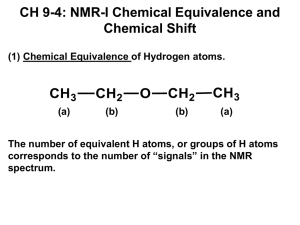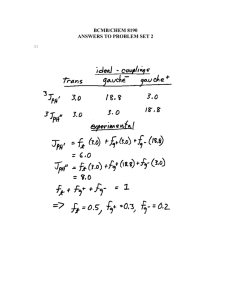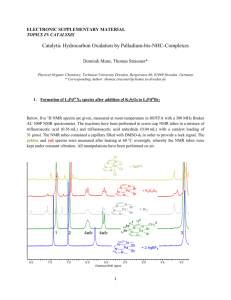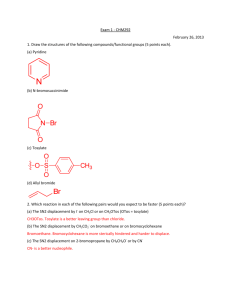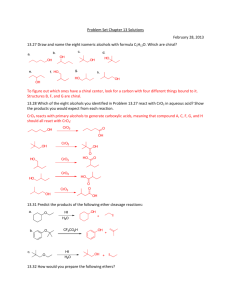NMR Spectroscopy
advertisement
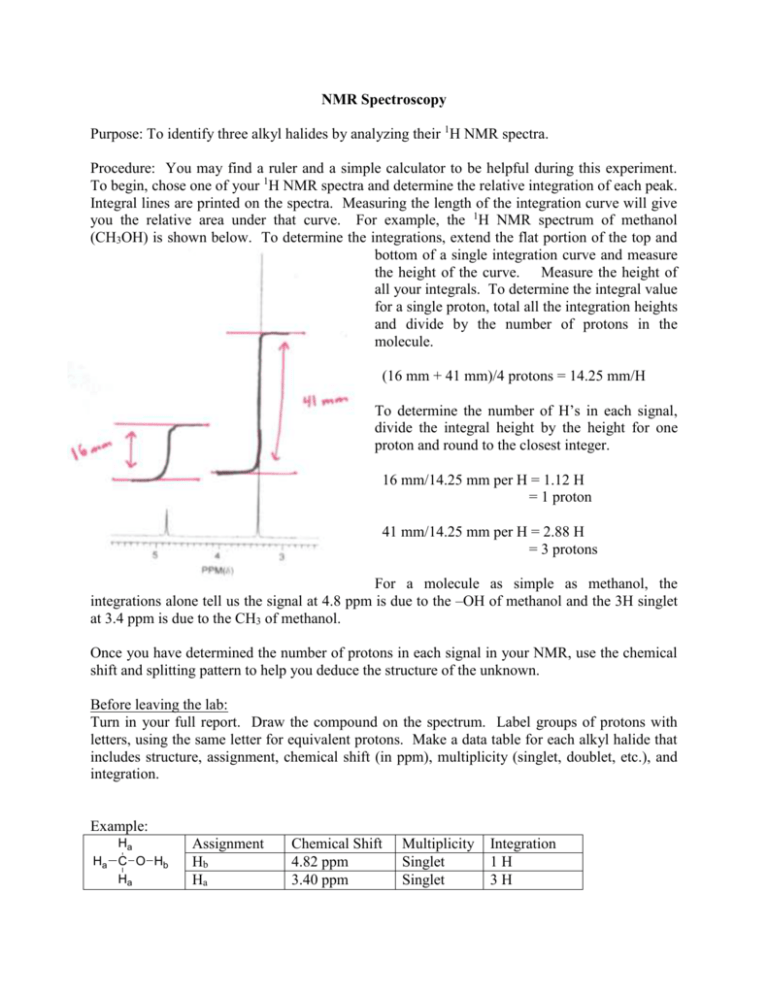
NMR Spectroscopy Purpose: To identify three alkyl halides by analyzing their 1H NMR spectra. Procedure: You may find a ruler and a simple calculator to be helpful during this experiment. To begin, chose one of your 1H NMR spectra and determine the relative integration of each peak. Integral lines are printed on the spectra. Measuring the length of the integration curve will give you the relative area under that curve. For example, the 1H NMR spectrum of methanol (CH3OH) is shown below. To determine the integrations, extend the flat portion of the top and bottom of a single integration curve and measure the height of the curve. Measure the height of all your integrals. To determine the integral value for a single proton, total all the integration heights and divide by the number of protons in the molecule. (16 mm + 41 mm)/4 protons = 14.25 mm/H To determine the number of H’s in each signal, divide the integral height by the height for one proton and round to the closest integer. 16 mm/14.25 mm per H = 1.12 H = 1 proton 41 mm/14.25 mm per H = 2.88 H = 3 protons For a molecule as simple as methanol, the integrations alone tell us the signal at 4.8 ppm is due to the –OH of methanol and the 3H singlet at 3.4 ppm is due to the CH3 of methanol. Once you have determined the number of protons in each signal in your NMR, use the chemical shift and splitting pattern to help you deduce the structure of the unknown. Before leaving the lab: Turn in your full report. Draw the compound on the spectrum. Label groups of protons with letters, using the same letter for equivalent protons. Make a data table for each alkyl halide that includes structure, assignment, chemical shift (in ppm), multiplicity (singlet, doublet, etc.), and integration. Example: Ha Ha C O Hb Ha Assignment Hb Ha Chemical Shift 4.82 ppm 3.40 ppm Multiplicity Singlet Singlet Integration 1H 3H
